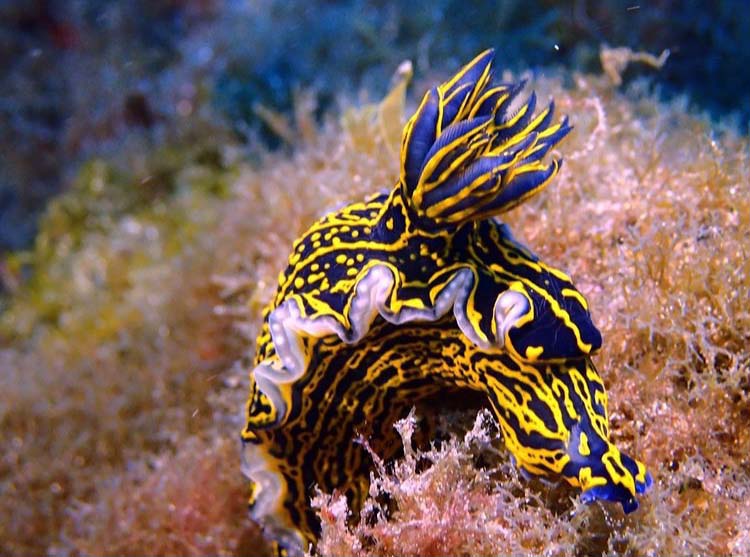Actually, what are Nudibranchs?
The short answer is... they are sea slugs!
As the water temperature increases we will start to see more nudibranchs in Tenerife. But what actually is a nudibranch? The short answer is, a sea slug! The most common around the Canary Islands is the “Giant Doris” or if you know your Latin “Felimare Picta”. However, they are also found in the Mediterranean Sea, European waters and the Gulf of Mexico.
The Giant Doris can grow up to approx. 13 cm in length and found at depths as deep as 55m. Their colouration changes as they grow but generally the body of the nudibranchs in Tenerife is dark blue with yellow markings. The “horns” at the front of their heads are “Rhinophores” and are very important. They allow the nudibranch to find their food, avoid predators and find a mate. In fact, their horns are so sensitive they can even sense changes in water pressure! Most Doris nudibranch have a feather-like plume on their backs which are their gills. When touched or threatened, the gills will retract into the body as a form of protection.
Since they don’t have a shell, nudibranchs are more exposed to predators. However, through years of evolution they have adapted to be able to defend themselves. Their main defense mechanism is to eat something that contains toxins and to then secrete the ingested acid. This process helps them to resist many predators.
Nudibranchs are hermaphrodites which means they have both male and female reproductive organs. This is similar to other slugs and snails. In order to reproduce, the sperm is exchanged from both partners where it is stored until the eggs are ready for fertilization. Usually, they lay their eggs in a spiral formation and can look like an underwater flower.
Due to their bright colours and slow movements, nudibranchs are great to practice your “macro” photography during your PADI Digital Media Specialty. Take a look at our Instagram for some pretty cool shots!


